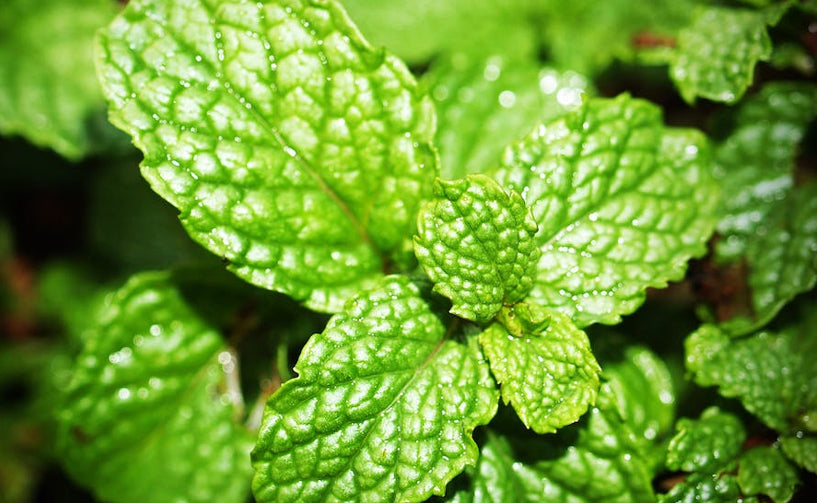Mint is also known as Mentha and belongs to the Lamiaceae family. It is largely found across North America, Europe, Australia, Africa and Asia. The herb has a sub-cosmopolitan distribution.
Mint is an aromatic perennial herb and has underground and over-ground stolon and erect, square, branched stems. The leaves are dark green in colour and lanceolate in shape and stem bears white or purple flowers.
It grows mostly in moist and shady places and can grow well anywhere in places like, stream sides and ditches. It grows quickly through underground roots and rhizomes. Leaves can be collected during the flowering season to harvest essential oils.
Ayurveda is using pudina or mint for long time for various ailments and disorders, like flatulence, cough and digestive problems. Its oil can be used to relieve various pains. It is also used traditionally by the Native Americans for various medicinal purposes. Mint and its certain extracted chemicals have wide application in medicine, food and cosmetics.
Various useful chemicals can be extracted from the mint, which include isomenthone, menthone, menthol, carvone, pulegone, limonene, piperitone, alpha-pinene, and beta-caryophyllene, methyl acetate, flavanoids and tannins.
Benefits of Mint
-
Has Antioxidants: Mint has high antioxidant content and helps the whole body to get rid of from harmful bacteria. For the same reason, mint protects the body from the damage by free radicals.
-
Improves Digestion: Mint aids in digestive ailments and disorders. It promotes appetite, relaxes stomach muscles, soothes and cleanses the stomach. It also helps in reducing stomach pain, nausea and sickness. It protects the stomach linings in stomach ulcer.
-
Relieves Headache: Mint gives quick relief in headache and migraine.
-
Improves Respiratory Health: Mint prevents and manages respiratory ailments and irritation such as, asthma, rhinitis, common cold and cough. It clears congestion, especially in throat, nose and lungs.
-
Improves Mental Health: Its mild and tangy aroma is enough to treat depression, anxiety, sluggishness and exhausted mind. Mint helps and restores normal cognitive function and enhances alertness.
-
Improves Skin Health: Mint is an excellent skin cleanser and antiseptic. It cleanses and soothes itchy skin, and is especially helpful in seasonal allergies. It provides relief from insect bite, skin rashes and minor burns.
-
Improves Oral Health: Mint refreshes the mouth and inhibits proliferation of harmful bacteria and toxins in mouth.
It is widely used as refreshing, soothing and flavouring agent in ice-creams, chocolates, desserts, candies, chewing gums, cosmetics, inhalers, breath fresheners, dental care, room freshener, aromatherapy, summer cocktails, mocktails, beverages and other culinary items.
The therapeutic properties of mint help in providing Daily Diagemax Tea and Daily Calm Tea their healing properties.






